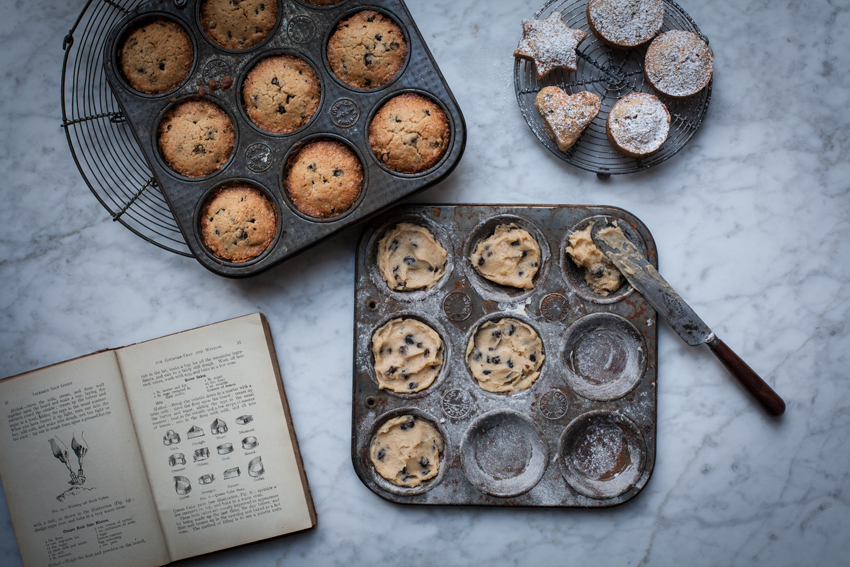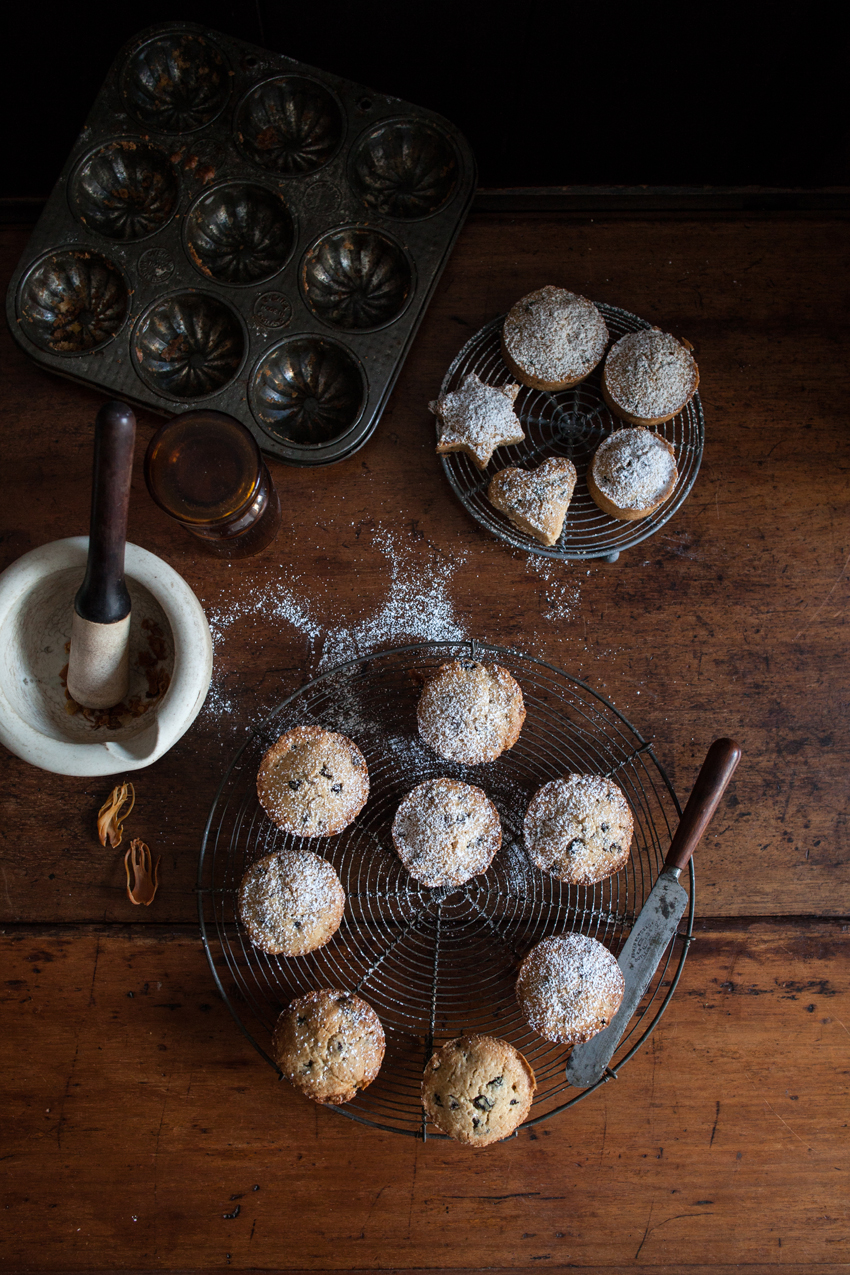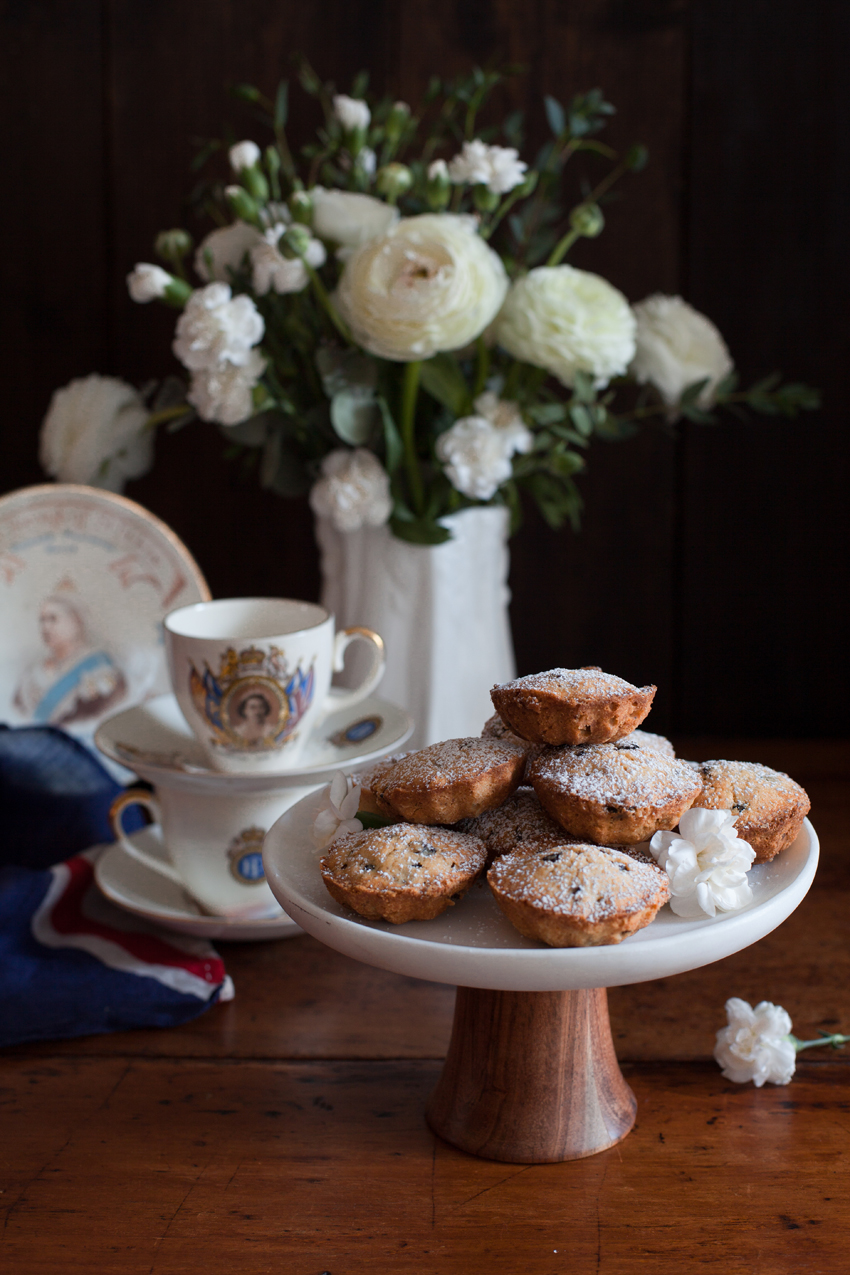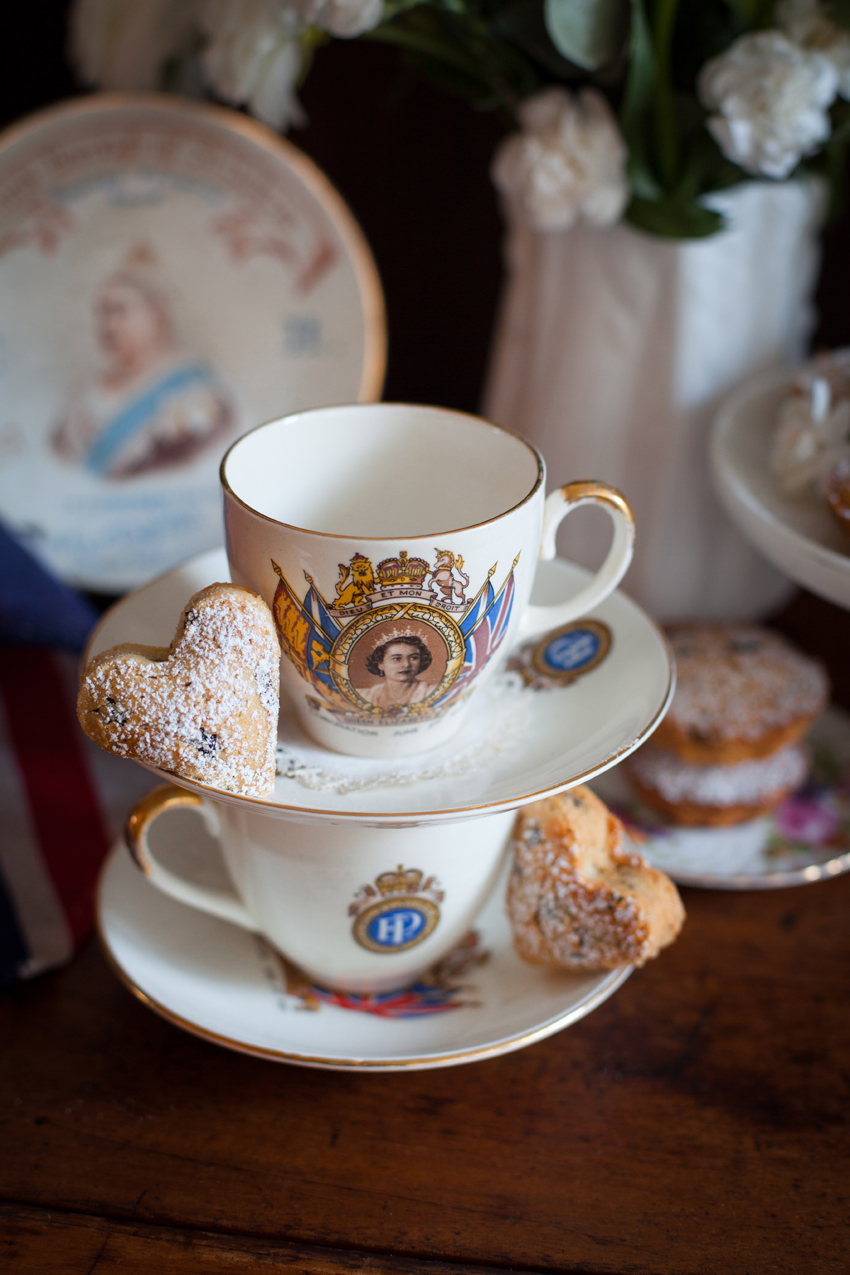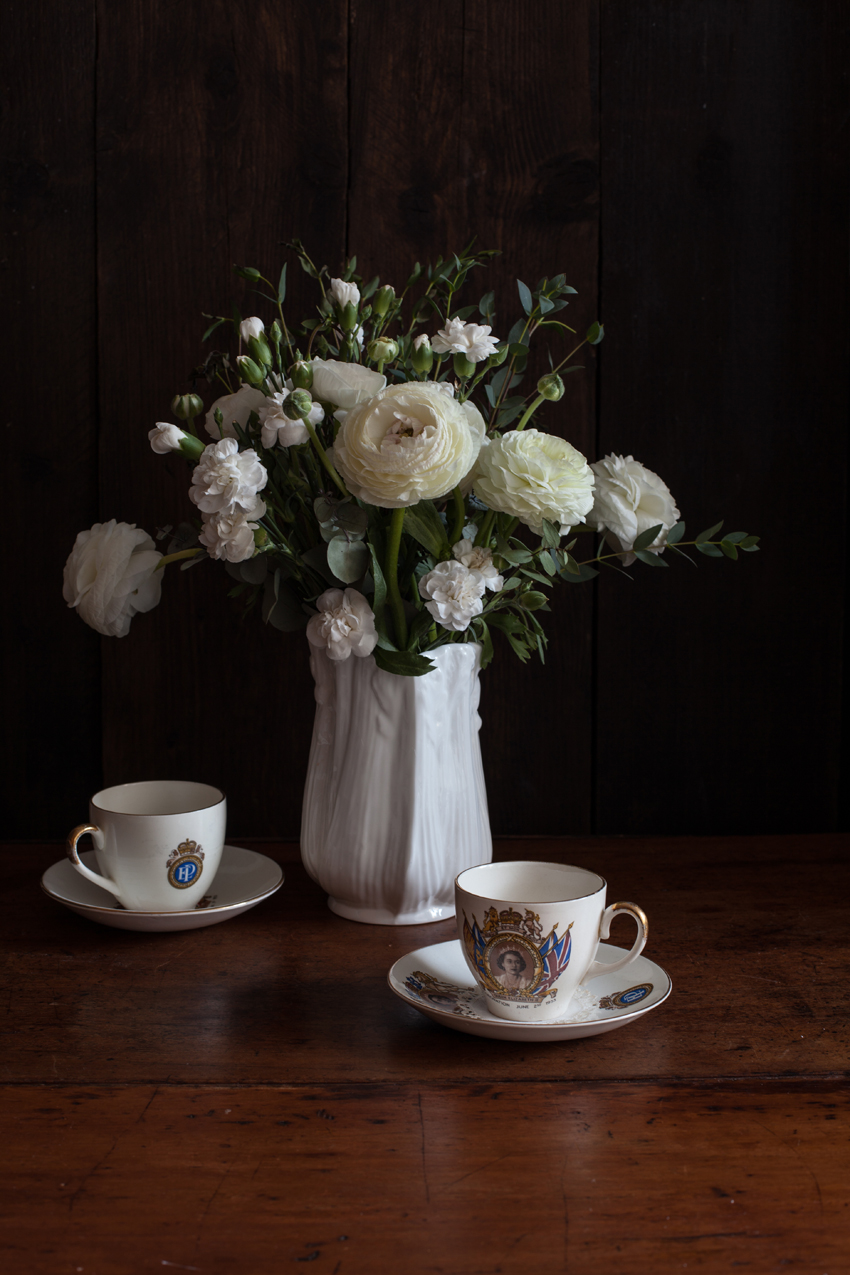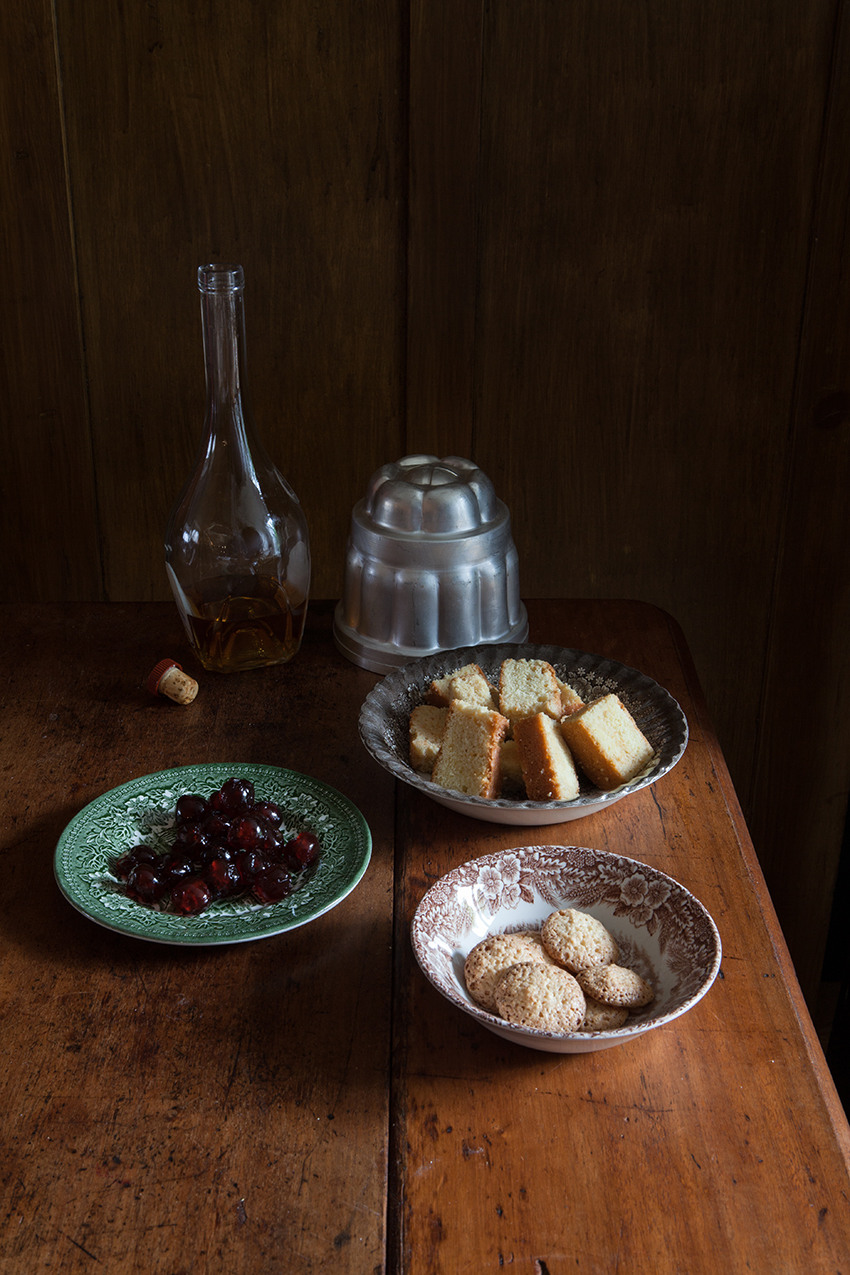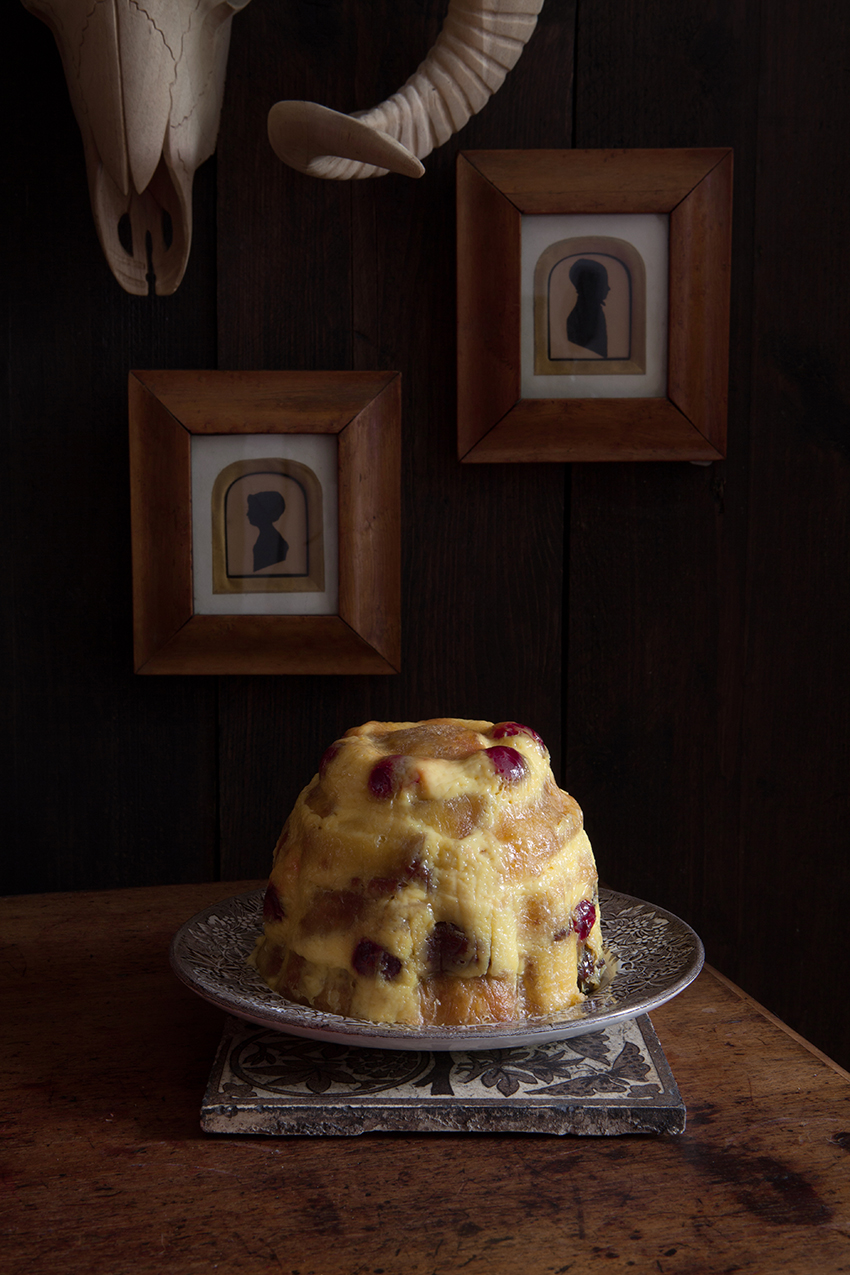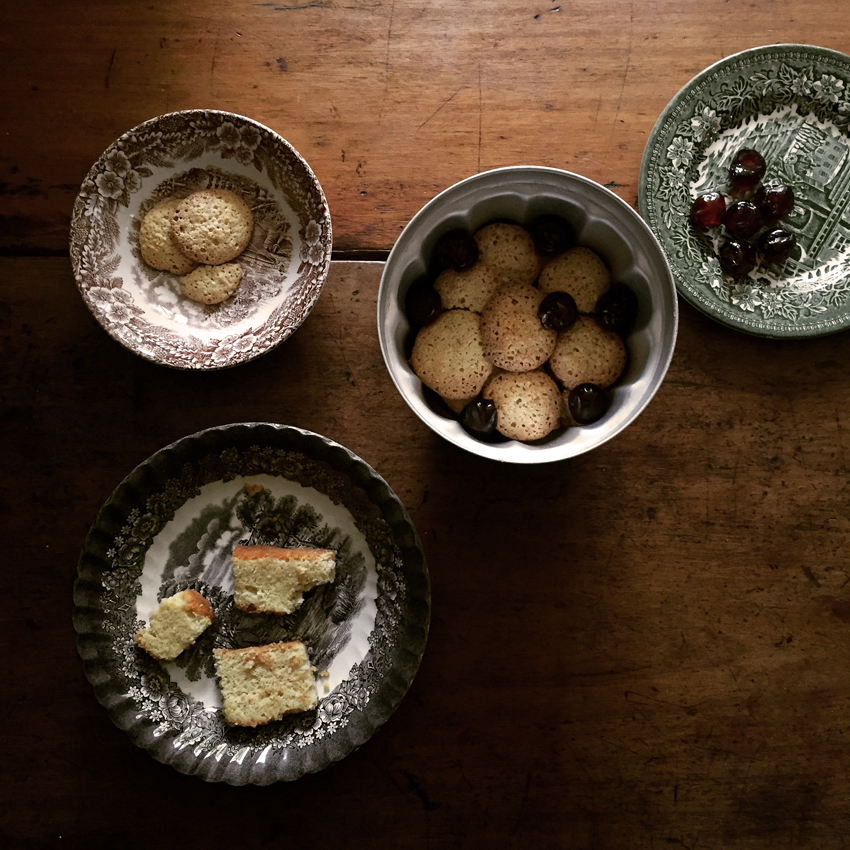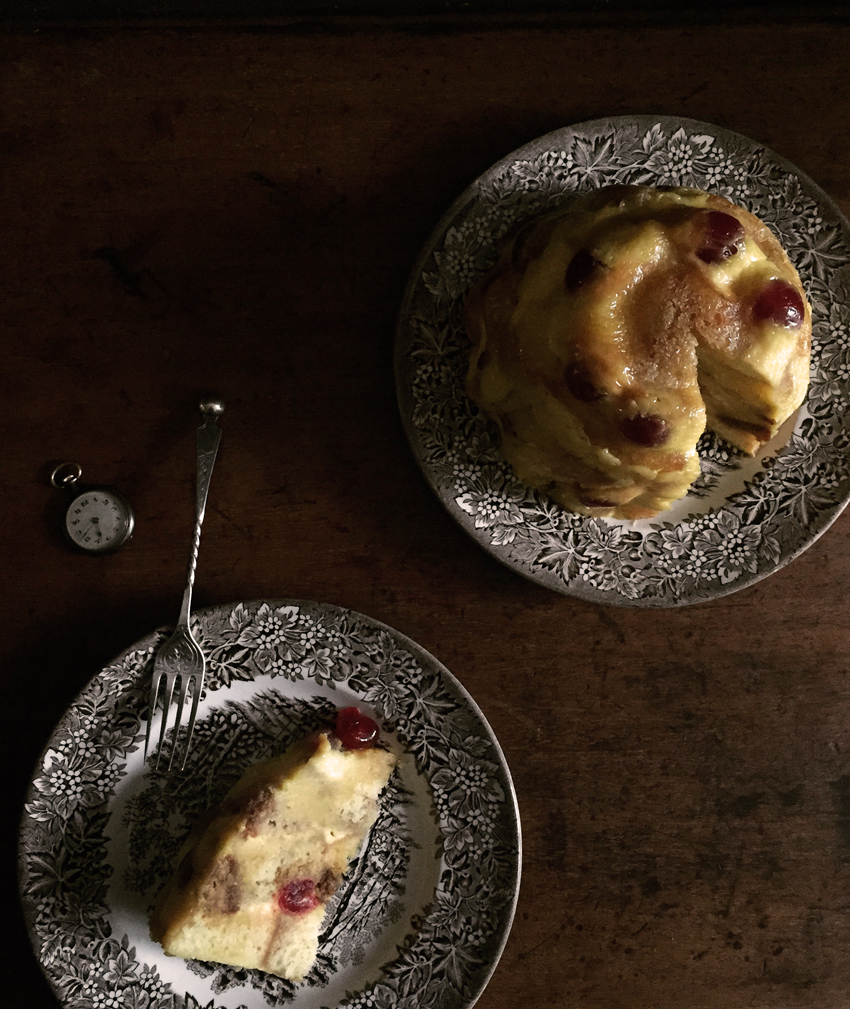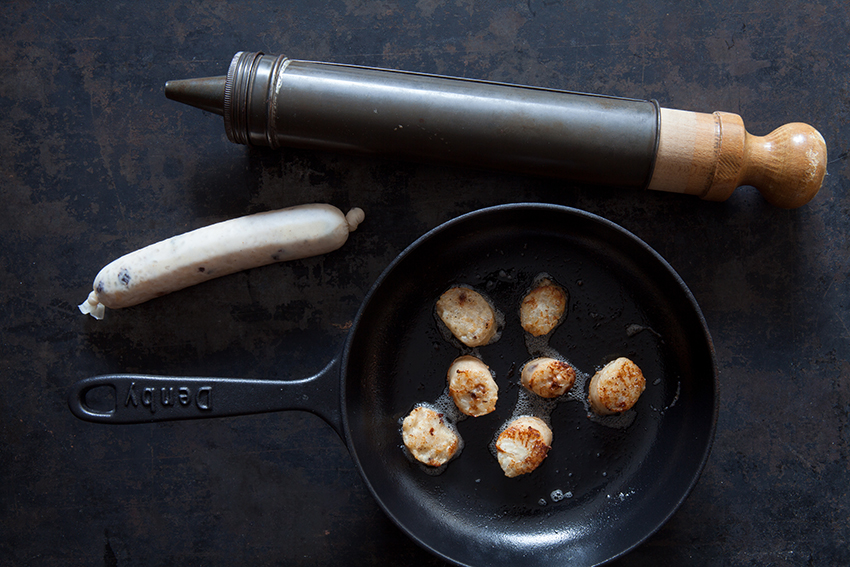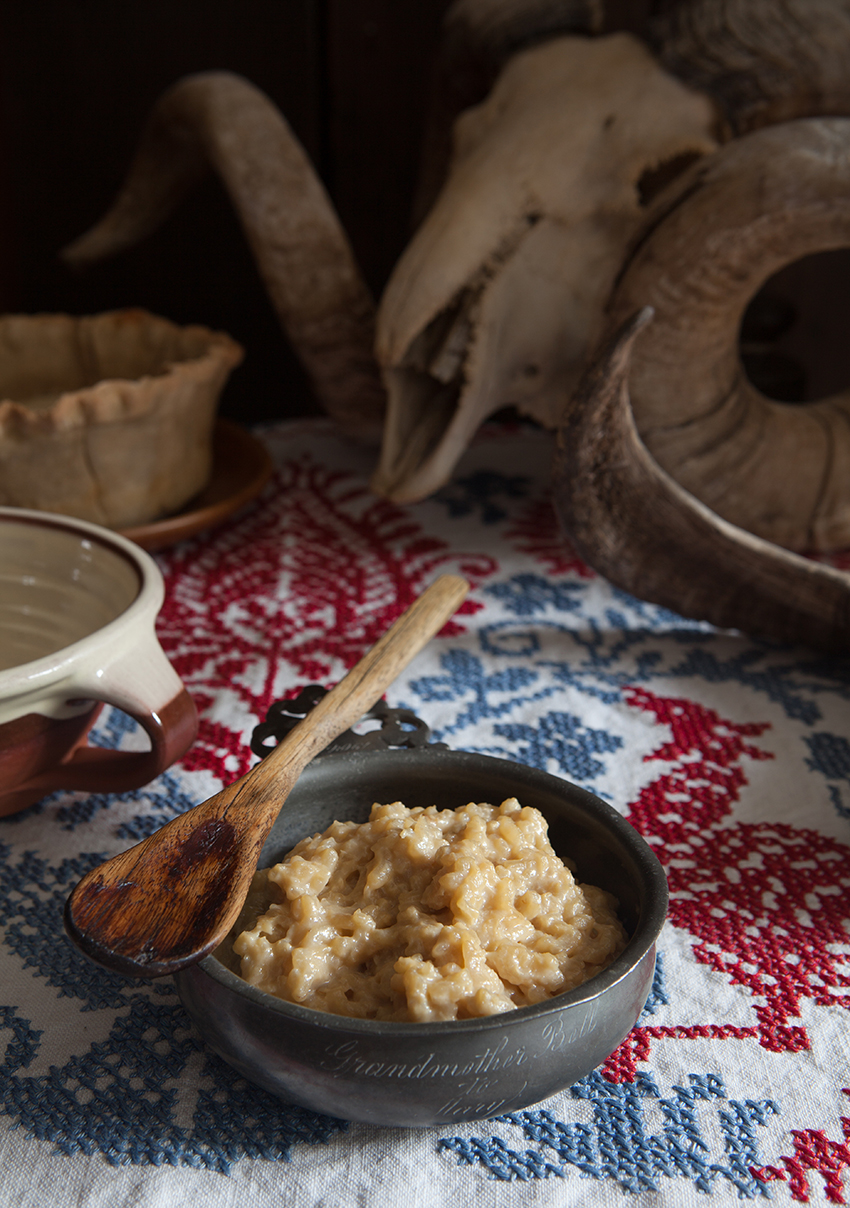The post Queen cakes – 18th century dainty bakes appeared first on Miss Foodwise.
]]>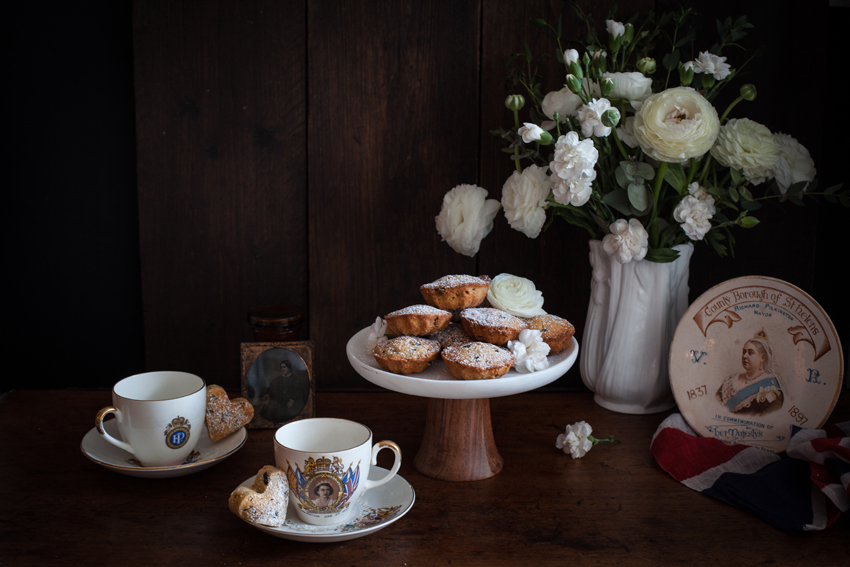
It is not a coincidence that I chose to write about Queen cakes today. If you’ve read the papers and watched the news, or if you are a royalist, then you know today the Queen of England celebrates her 90th birthday. This makes her the world’s oldest-reigning monarch and the longest reigning monarch in English history. Queen Victoria was the previous record holder with her 63 years and seven months. So Queenie has every reason to be smug and have a big party – which is a giant street picnic on the Mall (the strap of wide street in front of Buckingham palace) in june. Getting a ticket for it was near impossible to my regret, because this was a celebration I would have been happy to buy a new hat for, bunting I already have aplenty. So if you’re reading this Your Majesty… is there room for one more? I’ll throw in a book!
But let’s talk about these Queen cakes. They are little cakes, and they started popping up in English cookery books in the 18th century. When reading the several recipes from the 18th to the 20th century I have in original cookery books, they remind me of a little cake I grew up with in Belgium. However, the recipe was slightly different as the Belgian cakes were flavoured with a little vanilla or almond essence, while Queen cakes are flavoured with mace, orange flower water, rose water and lemon depending on the date of the recipe. The Belgian cakes also look more like Madeleines, but they both have currants in them and the use of vanilla or almond essence is of course a slightly more ‘modern’ way to flavour bakes.
As with many English dishes, the Queen cakes come with their own dedicated cake pans. These were produced in the 19th century and depictions of them can be found in at least two books that I know of, one I own. 18th century recipes remain silent about the tins they should be baked in, but it is very possible that the then fashionable mince pie tins would have been used, leaving them without a need to create new tins.
Buying dedicated cake tins was of course an investment, and if you weren’t going to bake Queen cakes every week, rather extravagant. Cookery book author Mrs Eliza Rundell (1806) suggests to use either little tins, patty pans, tea-cups or saucers to bake the batter in. She gives two similar recipes, one with rosewater and currants, another with grated lemon rind omitting the currants. She uses a pound each of butter, flour, sugar and currants to 4 modern eggs.
The earliest recipe appears to be that of Robert Smith (no not that fellar of The Cure) in 1724 in his ‘Court Cookery: or the Compleat English Cook’. He instructs to make his Queen’s Cakes with currants, washed, picked and rubbed clean, and flavourings which are a little Mace and orange flower water. He also uses a pound each of butter, flour, sugar and currants but about 5 modern eggs, omitting half the whites.
Take a Pound of dry’d Flower, a Pound of refin’d Sugar sifted, and a Pound of Currans wash’d, pick’d, and rubb’d clean, and a Pound of Butter wash’d very well, and rub it into the Flower and Sugar, with a little beaten Mace, and a little Orange-Flower Water; beat ten Eggs, but half the Whites, work it all well together with your Hands, and put in the Currans; sift over it double-refin’d Sugar, and put them immediately into a gentle Oven to bake.”
Court Cookery: or the Compleat English Cook, Robert Smith, 1724
Jumping to 1907 Frederick Vine gives an illustration (see book in picture above) of the Queen cake pans in his book ‘Saleable Shop Goods’. There are heart, clover, triangle, square, round and cutlet shapes. The recipe in this book uses a lot more flour (so less sugar) and only lemon essence, no currants in the batter, but he does instruct to sprinkle them on top of the cakes just before baking.
In the early 20th century recipes for Queen cakes aplenty with books often giving the option of 4 different recipes. Currants are back into the batter and several flavourings and toppings are suggested. It is quite possible that queen cakes were a term for all kinds of small cakes, much like fairy cakes or cupcakes. The recipe I’m giving you today are 18th century Queen cakes, recipe adapted (meaning recreated, I didn’t mess with it) from Robert Smith …
Some notes to the recipe
I find the cakes too sweet because they use an equal amount of sugar to butter and flour so I would definitely reduce this to 150 g. You can reduce the amount of currants to half, you will still have plenty of currants. Robert Smith suggests using your hands to mix everything, which I have done and worked much faster and better with the currants. Frederik Vine in his 19th century book tells us to use a palette knife to transfer the batter to the cake tins and I find that indeed using a small palette knife or blunt butter knife to do this works best. The original cake tins used for these looked a lot like cookie cutters with a base, but because the batter is so solid you can use cookie cutters placed on baking parchment (well buttered and dusted with flour of course) and fill these. In the past, cake tins or hoops didn’t always have a base. Finally, you could use self-raising flour if you want a lighter bake… this was done in the 19th century too.
What do you need – makes 20-22 cakes
- 250 g soft butter
- 250 g raw cane sugar
- 1/2 tsp ground mace (use mace blades bashed in a mortar, ready ground will give another result)
- 2 tsp orange flower water
- 250 g currants, soaked if you have the time
- 250 g flour
- 4 eggs, separated, of which one white discarded (nothing will go wrong if you leave it in)
Method
Prepare small cake tins, or cookie cutters about 5cm wide by generously buttering them and dusting them with flour.
Preheat your oven to 160°C
Cream butter and sugar as you would for regular pound cake. Now bash your mace blades in a mortar, I used two but any leftover can be kept in a jar for future use. Pour in the orange flower water and add the egg yolks one at a time.
Sift in the flour and mix well, the batter is quite dry for a cake batter so don’t be alarmed by this. When thoroughly combined, fold in the currants. I use my hands to combine the flour with the rest of the batter, you will soon see that this is indeed the best option and our 18th century writer is right (see note to the recipe above).
Whisk your egg whites until stiff, then fold into the batter with a spatula.
Use a palette knife to transfer batter to your cake tins, spreading it evenly.
Place in the middle of your preheated oven and bake for 30 minutes or untill golden brown. The cakes should have a dome from rising in the oven. When flat, they are tough.
Remove from the tins after 2 minutes and cool on a wire rack.
Finally, when cooled, dust with icing sugar and serve.
You Might also Enjoy
Francatelli’s Queen Victoria and Albert pudding >
The post Queen cakes – 18th century dainty bakes appeared first on Miss Foodwise.
]]>The post Cabinet Pudding – Or what to do with stale cake and booze appeared first on Miss Foodwise.
]]>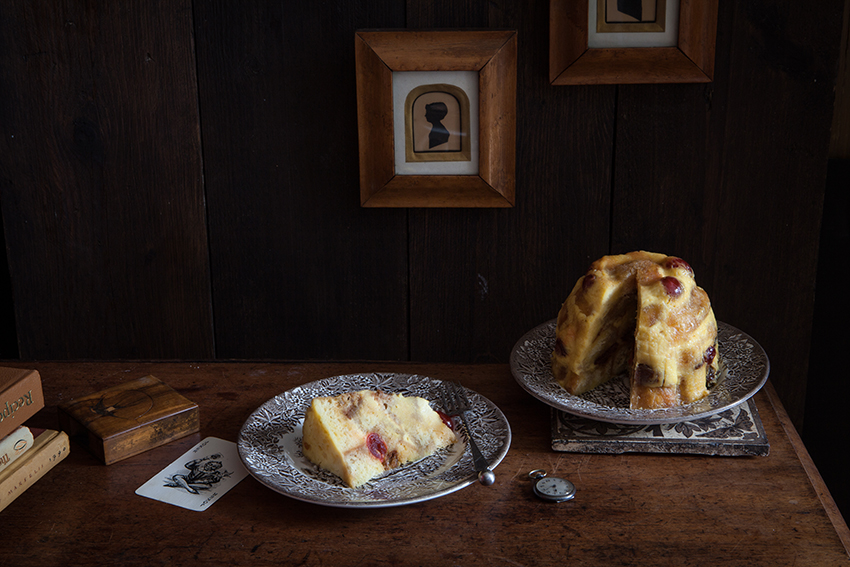
Let me share with you a recipe from Pride and Pudding, my debut book that was festively launched in London’s Borough Market two weeks ago. There is also good news if you haven’t ordered the book yet! The Amazon editorial team has not only included Pride and Pudding in their ‘Books of the Month’ – this week it is also part of their ‘Deal of the Week’ which comes with a 50% discount only this week. (Get it here >) Meaning it will only set you back a tenner! It looks like sales are going splendid as I haven’t seemed to have lost my spot in the first 10 of the top 100 Bestsellers. As an author you do fear no one will buy your book. As do you fear bad reviews and negativity. So if you have a moment and you like the book, Amazon reviews do make a difference.
Now back to the actual order of the day. Cabinet pudding was a favourite on Victorian tables, the first recipes for it appeared in the early 19th century, though similar puddings had been made long before then. It is also sometimes called Newcastle pudding, diplomat pudding or Chancellor’s pudding, though the connection with politics isn’t clear. Recipes also vary. There are theories about the name but none seemed to hold much truth to them.
Most recipes are tipsy puddings – much like a trifle – with pieces of sponge cake or sometimes even plain buttered bread or biscuits soaked in alcohol layered with dried fruits and custard. These are placed in a fancy mould and the pudding is then steamed.
This makes for a very satisfying pudding, I must admit I’m game for any pudding containing decent booze. There’s just something about a alcohol soaked cake, especially when not overly sweet and softly steamed like this one. It is so moist, it really doesn’t need anything else, and it is better on the next day. The best result however is obtained when using a home made sponge cake, or one that you have purchased from an artisan bakery. This because the cake should not disintegrate, but hold all that alcoholic liquid remaining quite in shape. But also because you can keep an eye on the sweetness, flavourings and other ingredients which are often added to keep the cake from going mouldy while it should actually just go stale.
I like to search out good candied cherries for this pud, as it is a pudding I will not make on a plain old tuesday, I like to go the extra mile and make it as best as it could be. Don’t use those marashino cherries in a jar, just dry candied but still looking plump and juicy.
When it comes to the ratafia biscuits needed, decent amaretti biscuits will do just fine. Or if you have stale ratafia’s left over from another time, then of course those will work splendidly.
Makes 1 pudding in a 1 litre (35 fl oz/4 cup) fancy mould
- 190 g (6. oz) stale sponge cake (or us the recipe in my book)
- 10–15 ratafia biscuits or amaretti biscuits (or us the ratafia biscuits recipe in my book)
- cognac or dark rum, to taste
- custard sauce 1/2 recipe see below
- (see page 338)
- 10–15 glaceed cherries
For the Custard (you need half of this, but you can use it to serve with it too. But I feel it really is best without)
- 10 egg yolks
- 500 ml (17 fl oz/2 cups) milk
- 500 ml (17 fl oz/2 cups) thick (double) cream
- 50 g (1. oz) raw sugar
- 1 mace blade or cinnamon stick
- 1 bay leaf (optional)
Method
Preheat the oven to 180C (350F).
Slice the sponge cake in 1 cm (3/8 inch) thick pieces and arrange in a deep dish with the biscuits. Drizzle with a generous amount of cognac or rum and let it soak.
Lightly grease the mould (if you don’t want to take any risks getting the pudding out later, line it with plastic wrap – the sort that doesn’t melt in the oven – sticking it to the butter).
Make the custard and let it cool slightly while you fill the mould.
Whisk the egg yolks in a large bowl. Bring the milk, cream, sugar, spice and bay leaf, if using, to a simmer in a saucepan. Strain the hot milk mixture and discard the flavourings. Pour a little of the hot mixture into the egg yolks and whisk thoroughly. Now continue to add the hot milk mixture in batches until fully incorporated and you get a smooth sauce. Pour the mixture back into the saucepan and cook over low heat, stirring constantly with a spatula until just thickened, making sure the eggs don’t scramble.
When just thickened, remove from the heat and pour into a cold bowl. If you don’t want the custard to develop a skin, cover the bowl with plastic wrap.
Place a few cherries in the base of the mould, then add a layer of sponge cake and one of biscuits, then add a few more cherries and another layer of sponge and biscuits. Repeat until the mould is three-quarters full.
Pour in the lukewarm custard then place the mould on top of a trivet or inverted saucer in a deep ovenproof pot that can completely cover the mould. Fill the pot with boiling water halfway up the sides of the mould, place a saucer on top of the mould and put the lid on the pot.
Carefully put the pot in your oven. Leave to steam for 1 hour, then allow the pudding to cool for 5 minutes in the mould before attempting to turn it out on a plate.
Serve with Sack sauce (equal amounts of butter, sugar and sherry or madeira), custard or just on its own, as it shouldn’t be dry.
The post Cabinet Pudding – Or what to do with stale cake and booze appeared first on Miss Foodwise.
]]>The post The Rise of Rice Pudding – a History and a 14th century recipe appeared first on Miss Foodwise.
]]>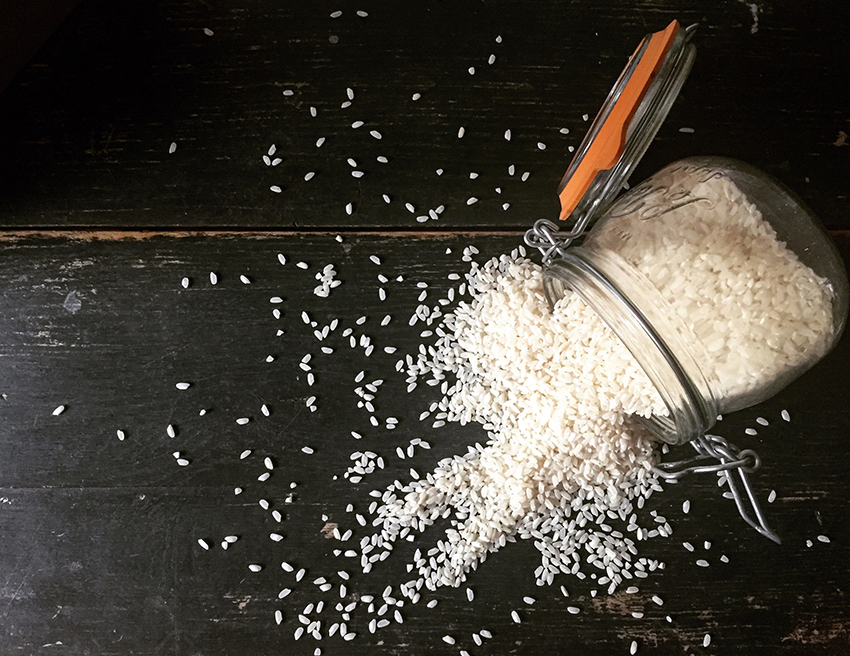
Yesterday, 11 april, I was asked to come on the BBC One Breakfast television program to talk about the history of rice pudding in light of the sudden craze for rice pudding – and that I have just written Pride and Pudding, a whole book about pudding. So how has rice pudding got itself back on our menu’s and in our hearts?
Rice pudding now as its own restaurant in Manhattan, New York dedicated to rice pudding – called ‘Rice to Riches’. The BBC journalist contacting me told me that Waitrose executive chef, Jonathan Moore, said that after visiting Manhattan’s rice pudding-only shop recently, Jason Atherton’s Michelan star restaurant, Pollen Street Social, and Berner’s Tavern in London have both re-invented the classic dessert. He also said sweet, savoury and embellished versions are becoming more ‘extreme’, with options at The Rice Cream Shoppe in Greenwich Village including gluten free and vegan versions. Waitrose also reported that sales of rice pudding have risen by 8% year on year.
I’m sure that in this modern day and age with dishes that look like works of art, we are all craving for something real and honest. Something which just isn’t pretending to be more than it is. Something so humble it conjures up memories of your nan, your mum or the auntie who made it especially when you were visiting. I have faint memories of my mum making rice pudding and I can remember the impatience for it to cool off and develop that glorious yellow skin which was really, the best part of the pud.
Rice pudding is also easy to make, and not at all very unhealthy if you don’t drop in half a ton of sugar. Jackie Kearney – Masterchef finalist – was also on the show with me and she brought in some puddings for us to try. A delicious vegan one (check out her book Vegan Street Food btw) with spices which I wanted to finish there and then – only I was on live TV so had to politely give it back!! Then one with passion fruit and a traditional baked one with a big skin which just made Jon Kay, the presenter cringe. He does not like a skin on a pudding, he does not know what is good I say!
But has rice pudding always been a humble dish, a pudding for all, a dish so plain we nearly forgot about it?
Rice pudding started its life in the kitchens of Kings and Queens. Rice was an expensive import so it would have been only for the elite. The first ones were pottages, which you can more link to a side dish or something more like a risotto than a dessert pudding (see what I did there, ‘dessert pudding’, cos not all puddings are sweet!!!) like we know it today. The Forme of Cury (1390) – the earliest surviving collection of recipes in England – gives a recipe for a rice pottage, and one for Ryse of Flesh. The Rice of Flesh is savoury and made with broth, almond milk and saffron, while the rice pottage is what would become the modern-day rice pudding and the recipe just omits the salt and broth, using water instead to cook the rice the first time.
Sugar isn’t added in The Forme of Cury; for a sweetened rice pudding we have to wait until the 15th-century Austin manuscripts, which include a pudding sweetened with honey and sugar. John Murell (A Newe Booke of Cookery) in 1615 adds eggs, suet, currants, cinnamon, sugar and barberries and stuffs the rice pudding into sausage skins, like a white pudding. In 1660, Robert May (The Accomplisht Cook) adds eggs, beef suet, salt, nutmeg, cloves, mace, currants, dates and powdered coriander seeds.
Unlike a modern rice pudding, these recipes uses suet as in most boiled puddings. As we can use arborio or pudding rice today, we don’t need to steep the rice overnight. I find arborio rice has a better result if you’re going to stuff the pudding into sausage skins. If you are making this as a regular rice pudding without using sausage skins, you may use pudding rice, and use a knob of butter instead of the suet. When made in sausage skins the puddings were usually roasted or fried before serving which really is very good. Also, I think it’s a laugh to serve people their dessert pudding in a sausage shape.
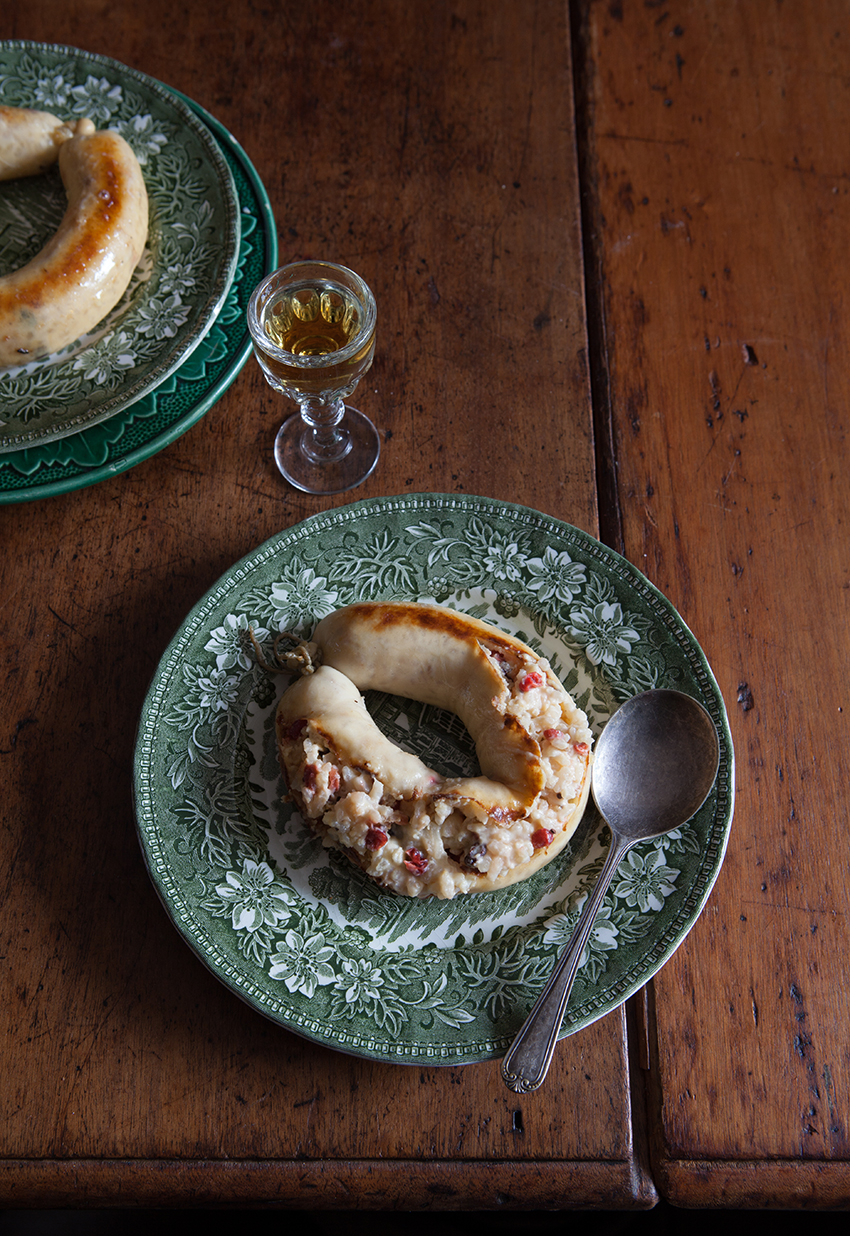
John Murell’s 17th century rice pudding in skins with barberries, recipe can be found in my book Pride and Pudding
It’s only when in the beginning of the 18th century, import of rice becomes more common, that rice pudding becomes something which is more every day rather than posh. By 1747 Hannah Glasse has several recipes for it in her book – mostly ‘borrowed’ from other cookery writers of that time. And in the 19th century Mrs Beeton tells us it is economical, good for the nursery and Eliza Acton tells us it is cheap.
In the 20th century it is so cheap and easy that it becomes a staple in schools and hospitals, and we start to really think rice pudding is awfully plain. Dorothy Hartley writes in Food in England (1954) that “East End women make a rice pudding using broth … when cooked it is finished under the joint of Mutton.” This is very similar to the “Ryse of Flesh” recipe found in The Forme of Cury (1390).
Today we want to go back to those easy straightforward dishes. As a hankering for the past, your childhood, and the safe and warm feeling that (hopefully) comes with it. We can add so many things to rice pudding, you can jazz it up with spices, add fruit and nuts, but it will always stay a rice pudding. Think of it as an old friend, even with a new coat and tie, it will always be that same old friend you’re happy to see.
Now get medieval and cook up this Ryse Of Flesh from The forme of Cury
Take Ryse and waishe hem clene. And do hem in erthen pot with gode broth and lat hem seeþ wel. Afterward take Almaund mylke and do þer to. And colour it wiþ safroun an salt, an messe forth.
The Forme of Cury, ed. Samual Pegge, c.1390
Serves 4
- 120g short-grain rice, such as arborio
- 500ml beef broth
- 500ml almond milk
- A few saffron strands
Method
Put the rice and broth in a deep saucepan and heat gently. Stir well and bring to the boil. Simmer and stir often so the rice doesn’t stick to the bottom of the pan.
When the liquid is almost completely absorbed, after about 15 minutes, add the almond milk and saffron. Stir well, then simmer gently for 20-30 minutes, stirring every now and then until all the liquid is absorbed and the rice is cooked and thick. Spoon the cooked rice pudding into a serving dish.
Recipe from my book Pride and Pudding, published 7 april by Murdoch Books and available on Amazon and Waterstones and many more spots! (receive no income from you clicking the amazon link)
You might also enjoy -> me on the telly 
And maybe you would like this Medieval chicken recipe here >
The post The Rise of Rice Pudding – a History and a 14th century recipe appeared first on Miss Foodwise.
]]>